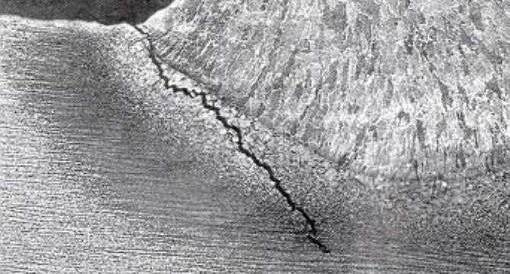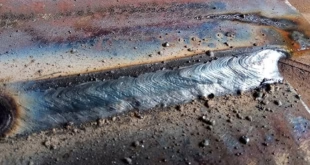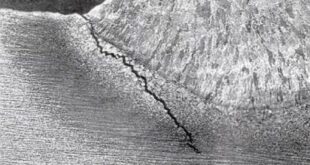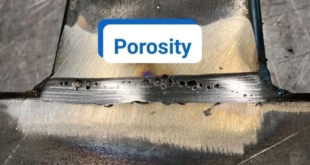What is Chevron Cracking in Welding?
Welding is a fascinating process that binds metals together, but like any technical procedure, it’s not without its challenges. One such challenge is Chevron Cracking, a defect that can compromise the strength and integrity of welded joints. But what exactly is Chevron Cracking, and how do you prevent it from ruining your hard work? Let’s dive into this topic step-by-step, breaking down everything you need to know.
Introduction to Chevron Cracking
Definition and Explanation
Chevron Cracking, also known as “stress-induced cracking” or “lamellar tearing,” is a specific type of defect in welding. It occurs when small cracks form in a “V” or chevron-like pattern within a welded joint. These cracks typically propagate from the center of the weld and spread outward, creating a distinct visual pattern when the joint is inspected or fractured.Imagine trying to glue two pieces of wood together, but tiny cracks form between the layers instead of a smooth bond. This is essentially what happens in Chevron Cracking, except it occurs in metals, and the consequences can be far more severe.

Why It’s Called “Chevron Cracking”
The name “Chevron Cracking” comes from the distinct pattern of the cracks, which resemble the shape of a chevron or an inverted “V.” This pattern often emerges when the weld is under stress or when the welding process involves improper techniques.
Common Industries and Applications Affected
Chevron Cracking is most common in industries that rely heavily on welding, such as construction, shipbuilding, pipeline manufacturing, and heavy machinery. For example, in pipelines, where metals are joined under high stress, a single Chevron Crack can compromise the entire structure’s safety.
The Science Behind Chevron Cracking
What Causes Chevron Cracking?
The primary cause of Chevron Cracking is residual stress—the stress left behind in the metal after welding. When the weld cools too quickly or improperly, the metal contracts unevenly, causing internal strains that lead to cracking. Other contributing factors include:
- Poor weld design.
- Impurities in the base material.
- Incorrect welding techniques.
Metallurgical Factors Contributing to the Issue
Certain metals are more prone to Chevron Cracking due to their metallurgical properties. For instance, high-strength, low-ductility steels are particularly susceptible. Impurities like sulfur or phosphorus in the metal can also make the material brittle, increasing the likelihood of cracking.
Types of Welds Prone to Chevron Cracking
Chevron Cracking is most often found in butt joints and fillet welds, especially when the weld is subjected to tensile stress or uneven heat distribution during the process.
Methods to Detect Chevron Cracking
Visual Inspection Techniques
Visual inspection is the simplest way to detect Chevron Cracking, but it’s not always reliable. While surface cracks might be visible, deeper cracks usually require advanced methods.
Advanced Non-Destructive Testing (NDT) Methods
Radiographic Testing
Radiographic testing involves using X-rays or gamma rays to detect subsurface defects like Chevron Cracking. This method is highly effective for finding deeper cracks.
Ultrasonic Testing
Ultrasonic testing uses high-frequency sound waves to detect cracks within the weld. It’s one of the most accurate methods for identifying Chevron Cracking.
Magnetic Particle Testing
This method involves applying a magnetic field to the weld and using magnetic particles to reveal surface and near-surface cracks.
How to Avoid Chevron Cracking in Welding
Pre-Weld Preparations
Proper preparation can make a world of difference. This includes:
- Cleaning the metal surface to remove impurities.
- Ensuring the base material is free from defects before welding.
Choosing the Right Welding Parameters
Using the correct welding current, voltage, and speed can help avoid excessive heat input, reducing the likelihood of Chevron Cracking.
Proper Post-Weld Heat Treatments (PWHT)
Post-weld heat treatments help release residual stresses in the weld and surrounding material, minimizing the risk of cracking.
Methods to Mitigate Chevron Cracking
Repair Techniques for Existing Cracks
Repairing Chevron Cracks often involves grinding out the defective area and re-welding it using improved techniques.
Modifying the Weld Design
Changing the weld design to distribute stresses more evenly can help mitigate the problem. For instance, incorporating multi-pass welds instead of single-pass ones can reduce thermal stresses.
Stress Relief Techniques
Applying stress relief techniques, such as vibration stress relief, can help mitigate residual stresses and prevent cracks from forming.
Welding Techniques to Prevent Chevron Cracking
Low-Hydrogen Welding
Using low-hydrogen electrodes and fillers can significantly reduce the chances of Chevron Cracking, as hydrogen embrittlement is a common cause.
Controlled Cooling Methods
Cooling the weld at a controlled rate prevents uneven contraction, which is a major contributor to cracking.
Multi-Pass Welding Technique
This technique involves welding in multiple layers, allowing each layer to cool slightly before applying the next. It’s particularly effective for thick materials.
FAQs
What materials are most susceptible to Chevron Cracking?
Chevron Cracking is most commonly observed in high-strength, low-ductility steels. Materials with impurities, such as sulfur or phosphorus, are also more prone to this issue due to their increased brittleness.
Can Chevron Cracking occur in automated welding processes?
Yes, Chevron Cracking can still occur in automated welding processes if the welding parameters, such as heat input, cooling rate, and stress control, are not properly optimized.
What impact does Chevron Cracking have on weld strength?
Chevron Cracking significantly compromises the structural integrity of a weld. These cracks can propagate over time, leading to failures under stress or load, which can be catastrophic in critical applications.
Are there specific welding codes or standards addressing Chevron Cracking?
Yes, certain welding codes, such as those provided by the American Welding Society (AWS) and other international standards organizations, include guidelines for preventing and addressing welding defects, including Chevron Cracking.
How can welders prevent Chevron Cracking during the welding process?
Welders can prevent Chevron Cracking by using low-hydrogen welding techniques, ensuring proper pre-weld and post-weld treatments, controlling cooling rates, and applying appropriate stress-relief methods. Proper training and adherence to welding best practices are also essential.
Conclusion
Chevron Cracking is a serious issue in welding that can compromise the structural integrity of your projects. However, by understanding its causes, identifying it early, and taking proactive steps to prevent it, you can ensure your welds remain strong and reliable. Remember, preparation and precision are key!
 Welding of Welders All about Welding and Welders
Welding of Welders All about Welding and Welders



